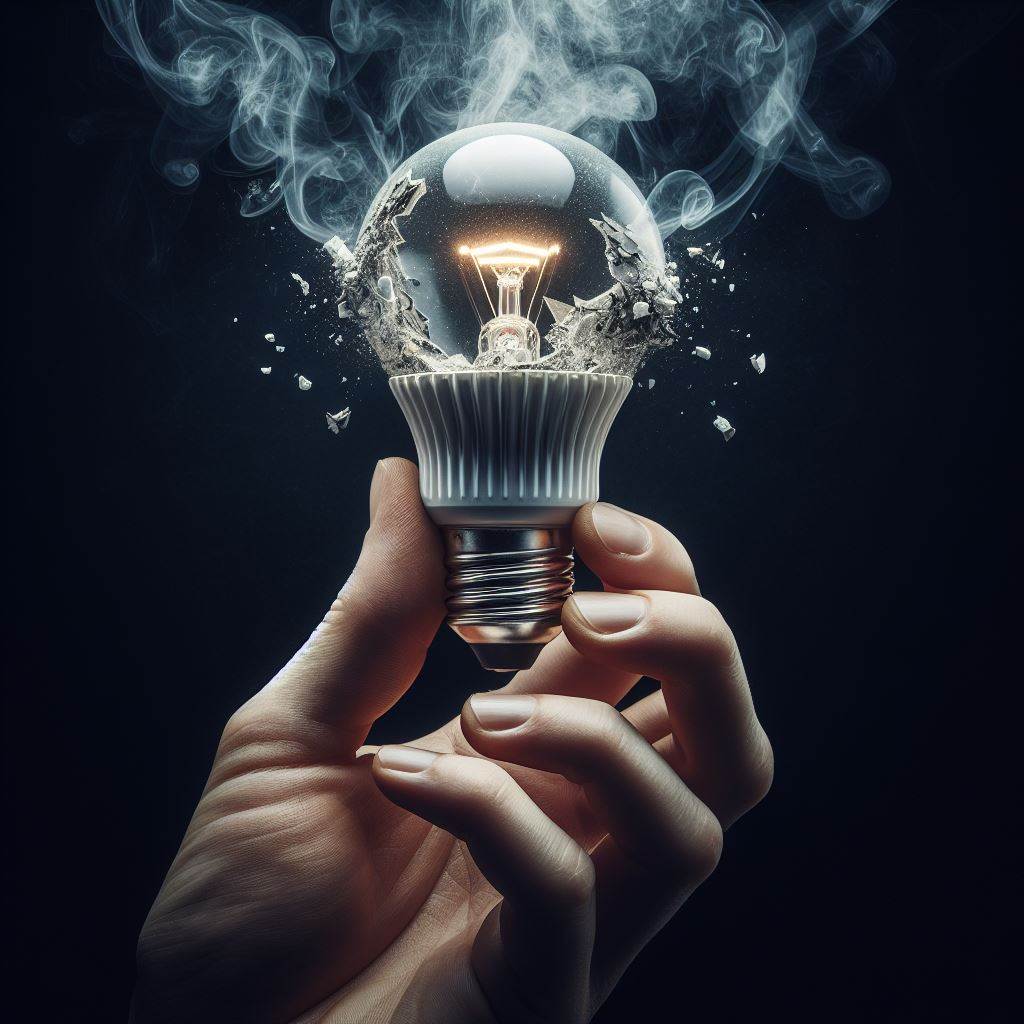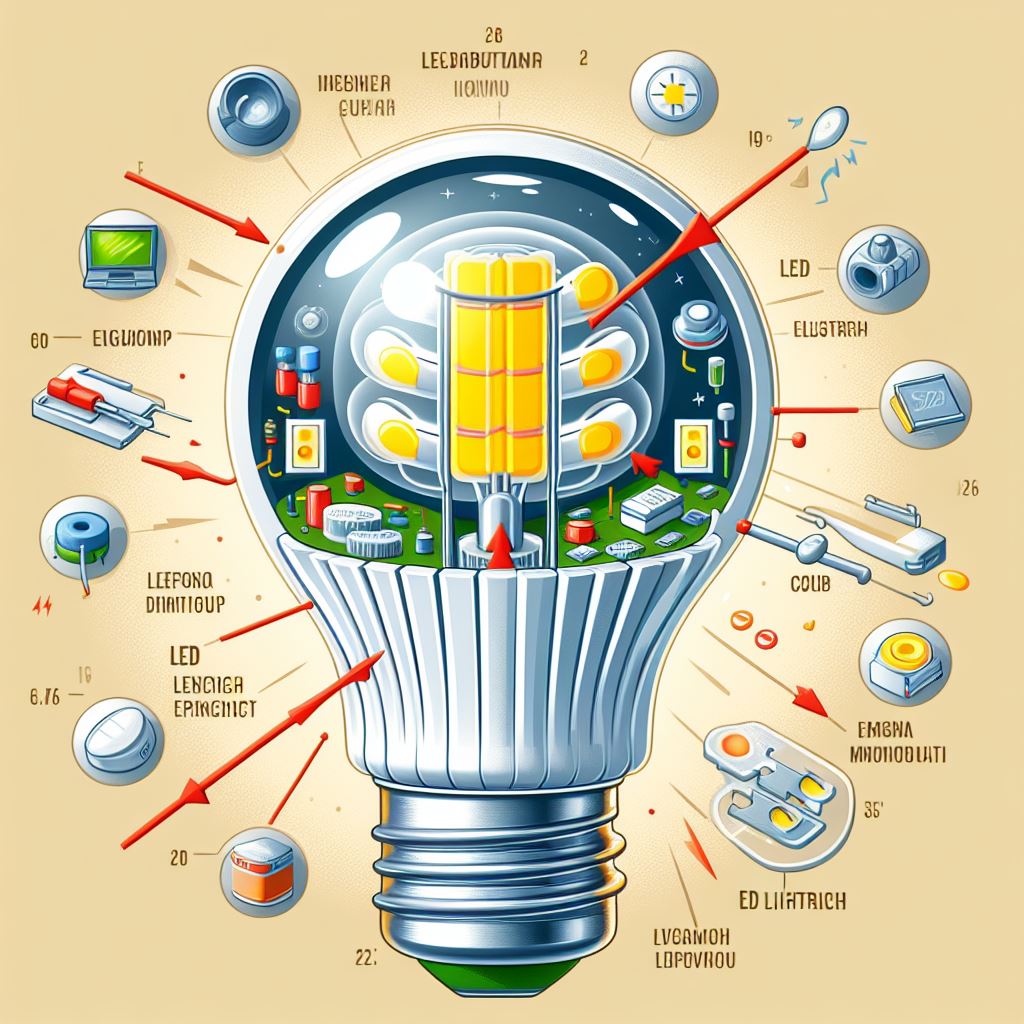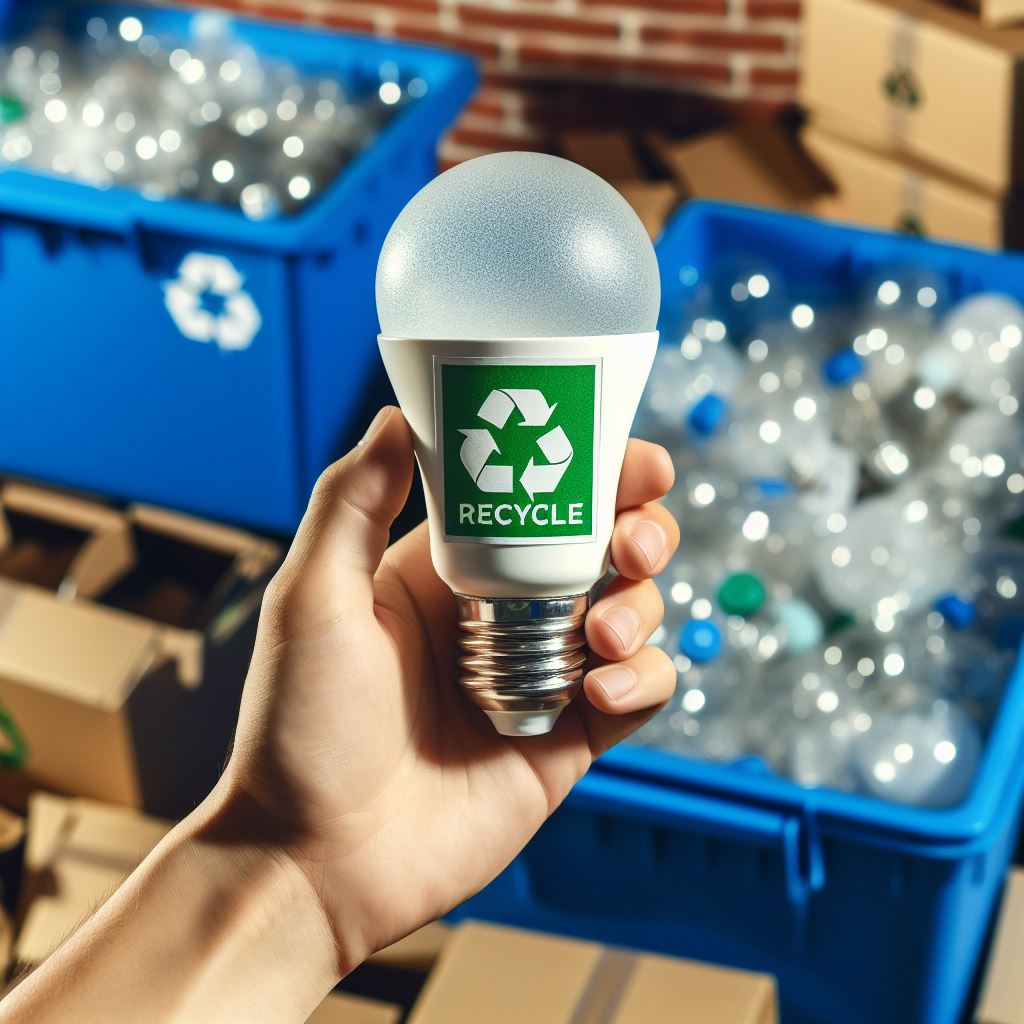Imagine upgrading your home with energy-efficient LED bulbs, only to find out they don’t work in some of your favorite lamps. As an expert in lighting solutions, I have encountered this issue numerous times and understand the frustration it can cause. In this blog post, we will delve into the reasons why LED bulbs may not work in some lamps, providing you with valuable insights and solutions to ensure a seamless transition to energy-efficient lighting.
From incompatible dimmer switches to voltage requirements, there are various factors that can prevent LED bulbs from functioning correctly in certain lamps. By understanding the underlying causes, you can make informed decisions when selecting lighting fixtures for your home. Let’s unravel the mysteries behind why LED bulbs may not work in some lamps and empower you to make the right choices for your lighting needs.
Common Reasons Why LED Bulbs Fail to Work in Some Lamps
LED bulbs are known for their energy efficiency and longevity, making them a popular choice for lighting solutions. However, there are instances where LED bulbs may not work properly in certain lamps. Let’s explore some common reasons behind this issue and how you can address them.
Compatibility Issues with Dimmer Switches and LED Bulbs
One of the main reasons why LED bulbs may not work in some lamps is compatibility issues with dimmer switches. Traditional incandescent bulbs and LED bulbs have different electrical requirements, leading to flickering or non-functionality when used with incompatible dimmer switches.
Quality of the LED Bulb and Its Impact on Lamp Functionality
The quality of the LED bulb can also play a significant role in its compatibility with certain lamps. Low-quality LED bulbs may not be designed to work with specific lamp fixtures, resulting in poor performance or failure to light up altogether.
Electrical Circuitry and its Role in LED Bulb Functionality
The electrical circuitry within the lamp itself can sometimes be the culprit behind LED bulbs not working as expected. Issues such as insufficient power supply or incompatible wiring can hinder the proper functioning of LED bulbs in certain lamps.
Before installing an LED bulb in a lamp, it is essential to ensure that the electrical circuitry is compatible with the bulb’s requirements.
Compatibility Issues with Dimmer Switches and LED Bulbs
Have you ever excitedly replaced your old incandescent bulb with a shiny new LED one, only to find it flickering or not turning on at all? The frustration is real, but fear not – this common issue has a known culprit: dimmer switches. Let’s delve into the why behind this problem.
Dimmer Switches and LED Bulbs: A Problematic Duo
Dimmer switches are like the maestros of illumination, allowing you to set the mood with just a touch. However, when paired with LED bulbs, things can get a bit rocky. Here’s why:
- Dimmer switches were originally designed for incandescent bulbs, which operate differently from LEDs.
- LED bulbs require a specific type of dimmer switch called a “LED-compatible dimmer” to function optimally.
- Standard dimmer switches can cause LEDs to flicker, buzz, or even not turn on due to their lower power consumption compared to incandescent bulbs.
Identifying the Issue
Wondering if your dimmer switch is the culprit behind your LED bulb woes? Here are some telltale signs to look out for:
- Flickering: If your LED bulb is flickering like a faulty strobe light, your dimmer switch may be to blame.
- Partial Illumination: Is your LED bulb refusing to illuminate fully or emitting a dim glow? It might be struggling with the dimmer switch.
- Incompatibility Warning: Some LED bulbs come with labels warning against using them with standard dimmer switches.
Next time you encounter issues with your LED bulb in a lamp, consider the compatibility of your dimmer switch. Ensuring they both speak the same language of illumination could save you from a lot of head-scratching moments.
Quality of the LED Bulb and Its Impact on Lamp Functionality
We often wonder why our LED bulbs don’t work in some lamps. The issue may not always lie with the lamp itself but could actually be traced back to the quality of the LED bulb being used.
Why does the quality of the LED bulb matter?
Think of it this way: not all LED bulbs are created equal. The quality of the materials used and the manufacturing process can greatly influence how well an LED bulb functions in a specific lamp. Here are some reasons why:
- Inferior components: Cheaper LED bulbs may use low-quality components that are not compatible with the electrical systems of certain lamps.
- Heat dissipation: Quality LED bulbs are designed to dissipate heat effectively, preventing overheating issues that could impact their performance.
- Consistent light output: Higher quality LED bulbs are more likely to provide a stable and consistent light output, ensuring they work properly in a variety of fixtures.
What can you do to ensure you’re using a quality LED bulb?
When selecting an LED bulb for your lamp, consider the following factors to ensure it’s of good quality:
- Look for LED bulbs from reputable brands known for their quality standards.
- Check the packaging for certifications like ENERGY STAR and UL, which indicate the bulb has been tested for safety and performance.
- Consider the color rendering index (CRI) of the bulb, as higher CRIs generally indicate better light quality.
By opting for a high-quality LED bulb, you increase the chances of it working efficiently and effectively in your lamp.
And remember, it’s not always the lamp’s fault if your LED bulb isn’t functioning correctly – sometimes, it’s just a matter of investing in a better-quality bulb!
Electrical Circuitry and its Role in LED Bulb Functionality
Have you ever tried to switch out an incandescent bulb for a modern and efficient LED bulb, only to find it refuses to work in your lamp? It’s frustrating, isn’t it? Before you throw your hands up in defeat, let’s dive into why LED bulbs not work in some lamps.
Understanding the Role of Electrical Circuitry
LED bulbs are a popular choice for their energy efficiency and durability, but they can be finicky when it comes to compatibility with existing lamp fixtures. The electrical circuitry within a lamp plays a crucial role in determining whether an LED bulb will work correctly or not.
Factors Affecting LED Bulb Functionality in Lamps
Several factors related to the electrical circuitry of lamps can impact how LED bulbs operate:
- Compatibility with the lamp’s voltage and wattage requirements
- The presence of electronic transformers that may not be compatible
- Issues with the lamp’s internal wiring that can affect the bulb’s performance
How Electrical Circuitry Can Cause LED Bulb Failure
When the electrical circuitry of a lamp is not compatible with an LED bulb, it can lead to issues such as:
- Flickering or dimming of the LED bulb
- Failure to turn on altogether
- Reduced lifespan of the LED bulb due to constant power fluctuations
It’s essential to consider the electrical compatibility of your lamp before switching to LED bulbs to ensure they function correctly and have a long lifespan. If you’re experiencing problems with LED bulbs in your lamps, it may be worth checking the lamp’s electrical circuitry for compatibility issues.
Understanding Wattage and Color Temperature Differences in LED Bulbs
When it comes to choosing the right LED bulbs for your lamps, understanding wattage and color temperature differences plays a crucial role in ensuring compatibility. Let’s dive into these key factors to shed some light on why LED bulbs not working in some lamps may be a common issue.
Deciphering Wattage Levels
LED bulbs consume lower wattages compared to traditional incandescent bulbs. However, wattage alone doesn’t determine brightness. Consider lumens, which measure actual light output, when selecting LED bulbs for your lamps.
Color Temperature Matters
The color temperature of an LED bulb affects the ambiance it creates. Warmer tones (around 2700K) are cozy for bedrooms, while cooler tones (5000K) suit offices. Ensure the color temperature aligns with the mood you wish to achieve in your space.
Check for Compatibility
- Ensure the wattage of your LED bulb matches or is lower than the lamp’s recommended wattage to prevent overheating.
- Consider dimmable LEDs if your lamp has a dimmer switch to avoid flickering or inconsistent lighting.
Assessing Color Temperature Preferences
- Choose warm white LEDs for cozy, ambient lighting in living spaces.
- Opt for cool white LEDs for brighter, task-oriented areas like kitchens and home offices.
Remember, the right LED bulb can transform how your space looks and feels. By understanding wattage and color temperature differences, you can make informed choices and avoid frustrations of LED bulbs not working effectively in your lamps.
Signs that Your Lamp May Not Support LED Bulbs
So, you’ve purchased some fancy new **LED bulbs**, eager to update the lighting in your home. You eagerly screw them into your favorite lamp, only to find that they simply won’t light up. What gives?
Dim or Flickering Light
If your LED bulbs are dim or flickering, this could be a sign that your lamp is not compatible with them. LED bulbs require specific electrical components to function properly, and if your lamp is not equipped with these, the light may appear weak or unstable.
No Light at All
If your LED bulbs refuse to light up at all, despite being properly screwed in and powered on, this could indicate that there is an issue with the lamp’s circuitry. Some older lamps may not be designed to work with the low wattage of LED bulbs, leading to a lack of illumination.
Overheating
LED bulbs produce less heat than traditional incandescent bulbs, but if your lamp feels excessively hot with an LED bulb in place, it could be a sign of compatibility issues. LED bulbs require proper ventilation to prevent overheating, and if your lamp is not designed to disperse heat efficiently, it could lead to problems.
Interference with Dimmer Switches
LED bulbs and dimmer switches don’t always play nice together. If your lamp has a dimmer switch and you notice that your LED bulbs are behaving erratically when you adjust the brightness, this could be a compatibility issue. Not all LED bulbs are designed to work with dimmer switches, so make sure to check for compatibility before installing them.
Remember, not all lamps are created equal, and some may simply not be compatible with LED technology. If you encounter any of these signs when trying to use LED bulbs in your lamp, it may be time to consider alternative lighting options.
Conclusion
After exploring the various reasons why LED bulbs may not work in some lamps, it is evident that factors such as incompatible dimmer switches, improper voltage, and poor connectivity can all contribute to this issue. As consumers continue to transition to LED technology for its energy efficiency and longevity, these potential obstacles should be taken into consideration to ensure a smooth transition.
By understanding the unique requirements of LED bulbs and carefully selecting compatible fixtures, consumers can avoid frustrating situations where their bulbs do not function as intended. It is crucial to educate ourselves on the intricacies of LED technology to reap its benefits fully and enjoy a well-lit and energy-efficient living space.
Remember, troubleshooting LED bulb compatibility issues may require some patience and experimentation, but the long-term advantages of using these modern lighting solutions are well worth the effort.
Frequently Asked Questions (FAQs)
Why do LED bulbs not work in some lamps?
LED bulbs may not work in some lamps due to incompatible dimmer switches. LEDs require specific dimmers labeled as compatible with LED technology. Using an incompatible dimmer can cause flickering or non-functioning bulbs.
Can the type of lamp affect the functionality of an LED bulb?
Yes, the design of some lamps can interfere with LED bulbs. Some lamps have built-in voltage regulators or motion sensors that may not be compatible with LED bulbs, causing them to flicker or not turn on.
Do LED bulbs require a specific wattage to work in different lamps?
LED bulbs consume less power than traditional incandescent bulbs. Make sure the LED bulb wattage is within the range supported by the lamp. Using a bulb with a wattage too high for the lamp can cause it not to work.
How can I determine if my lamp is compatible with LED bulbs?
Check the manufacturer’s guidelines for your lamp model. Look for LED compatibility information or contact the manufacturer directly for assistance in determining if your lamp supports LED bulbs.
Is it possible that the socket in the lamp is causing the LED bulb issue?
Yes, the socket in the lamp could be the problem. Some older lamp sockets may not make proper contact with LED bulbs. Cleaning the socket or replacing it with a compatible one could resolve the issue.
What role do voltage fluctuations play in LED bulbs not working in lamps?
LED bulbs are sensitive to voltage fluctuations. If the lamp is experiencing inconsistent voltage supply, the LED bulb may flicker or fail to turn on. Using a voltage regulator or stabilizer can help mitigate this issue.







